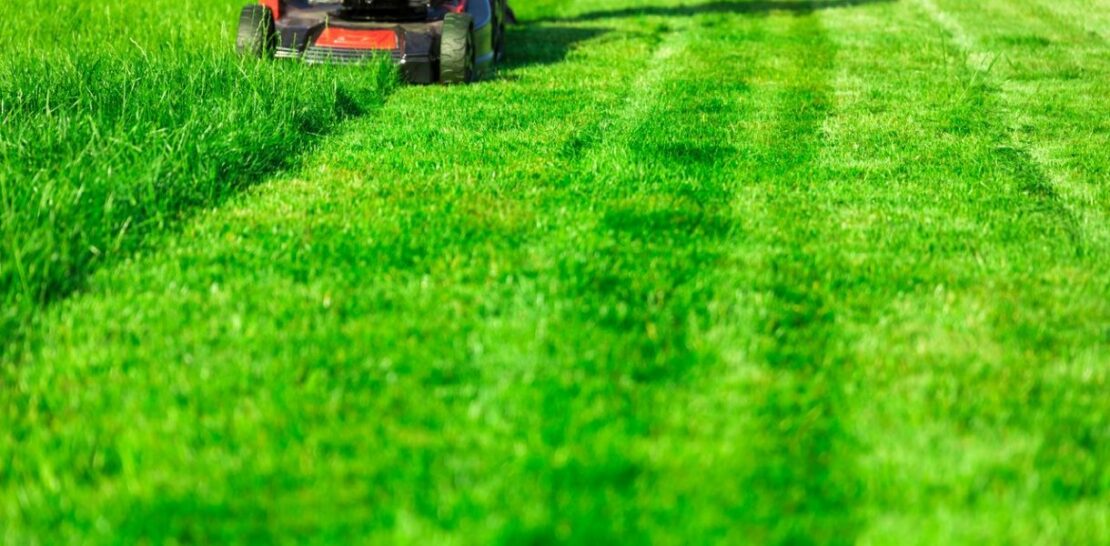As temperatures soar and the sun shines bright, many homeowners dream of a perfect lawn to enjoy during the summer months.
A lush, green, weed-free lawn not only adds to the curb appeal but also provides an ideal space for family gatherings and outdoor activities.
Achieving and maintaining a perfect summer lawn may seem like a daunting task, but with a little knowledge, planning, and effort, even a novice gardener can create a thriving, beautiful lawn.
In this comprehensive guide, we will explore five essential tips that will help you achieve a healthy, vibrant lawn that will be the envy of your neighbors.
1. Prioritize Proper Mowing Techniques
The first essential tip to achieve a perfect summer lawn is to pay close attention to your mowing techniques. Many homeowners underestimate the impact that proper mowing can have on the overall health and appearance of their lawn.
Mowing Height: One of the most important factors to consider is the mowing height. Setting your mower to the correct height is essential for promoting a healthy, dense turf. Cutting grass too short can stress the grass and make it more susceptible to weeds, pests, and diseases. In general, the recommended mowing height for cool-season grasses, such as Kentucky bluegrass and tall fescue, is 3 to 4 inches. For warm-season grasses, such as Bermuda and Zoysia, the recommended height is 1 to 2 inches.
Mowing Frequency: Another important consideration is the frequency of mowing. It is crucial to follow the “one-third rule,” which states that you should never remove more than one-third of the grass blade at a time. This ensures that the grass has enough leaf tissue to photosynthesize and grow, preventing stress and promoting a healthy root system. As a general rule, mow your lawn whenever it reaches one-and-a-half times the recommended mowing height.
Mower Maintenance: Lastly, proper mower maintenance is essential for a clean, even cut. Be sure to keep your mower blades sharp, as dull blades can bruise and tear the grass, leading to browning and an increased risk of disease. Additionally, clean your mower deck regularly to prevent the buildup of grass clippings, which can spread diseases and inhibit proper mower function.
2. Cultivate a Robust Root System with Deep, Infrequent Watering
Proper watering techniques play a crucial role in achieving a perfect summer lawn. The goal is to encourage a deep, robust root system that can withstand the stresses of summer heat and drought conditions. To accomplish this, you should focus on watering your lawn deeply and infrequently, rather than shallow and frequent watering.
- Watering Depth: Aim to water your lawn to a depth of 6 to 8 inches. This can be achieved by applying approximately 1 to 1.5 inches of water per week, depending on factors such as the type of grass, soil composition, and climate. You can measure the watering depth by inserting a probe or screwdriver into the soil after watering. If it penetrates easily to the desired depth, you’ve watered sufficiently.
- Watering Frequency: It is best to water your lawn once or twice a week, offering deep, thorough irrigation. This method encourages the roots to grow deeper into the soil, helping the grass withstand drought conditions and resist pests and diseases.
- Timing: The ideal time to water your lawn is early morning, between 4 AM and 10 AM. This allows the water to soak into the soil before the heat of the day causes excessive evaporation. Avoid watering in the late afternoon or evening, as this can lead to an increased risk of disease due to prolonged moisture on the grass blades.
3. Feed Your Lawn with Balanced Fertilization
Fertilization is key to a healthy, vibrant lawn. Providing your grass with the necessary nutrients will ensure strong growth, improved stress tolerance, and a reduced risk of weed infestations. However, it is essential to follow proper fertilization techniques to avoid damage to your lawn.
- Nitrogen: Nitrogen is the most important nutrient for promoting lush, green growth. The recommended annual nitrogen application rate for most lawns is 2 to 4 pounds per 1,000 square feet. Be sure to apply nitrogen evenly and follow the product’s label instructions for application rates and timing. Over-application of nitrogen can lead to excessive growth, increased susceptibility to disease, and environmental pollution due to runoff.
- Phosphorus and Potassium: In addition to nitrogen, phosphorus and potassium are essential nutrients for a healthy lawn. Phosphorus promotes strong root development, while potassium improves drought tolerance and disease resistance. It is generally recommended to apply a balanced fertilizer containing all three nutrients, with a ratio of 3:1:2 or 4:1:2 of nitrogen, phosphorus, and potassium, respectively.
- Timing: The optimal time to fertilize your lawn depends on the type of grass and your specific climate. Generally, cool-season grasses should be fertilized in the fall and spring, while warm-season grasses benefit from fertilization in late spring and early summer. Avoid fertilizing during periods of extreme heat or drought, as this can stress the grass and lead to damage.
- Soil Testing: To ensure accurate fertilization, it is essential to test your soil to determine its nutrient levels and pH. This information will guide you in selecting the appropriate fertilizer products and application rates. Soil tests can be performed using at-home kits or through professional soil-testing services.
4. Implement Effective Weed Control Strategies
Weeds are a common enemy of the perfect summer lawn. These unwelcome invaders compete with your grass for nutrients, water, and sunlight, making it crucial to implement effective weed control strategies. There are various methods to combat weeds, but a combination of preventive and reactive measures is often the most successful approach.
Preventive Measures: Fostering a dense, healthy lawn is the first line of defense against weeds. By following the proper mowing, watering, and fertilization practices outlined earlier, you will create an environment that is less conducive to weed growth. In addition, consider implementing these preventive measures:
- Apply pre-emergent herbicides in early spring to prevent the germination of weed seeds. These products should be used in accordance with the label instructions and specific weeds targeted.
- Overseed your lawn in the fall to promote a thick, dense turf that will outcompete weeds for resources.
- Regularly inspect your lawn for signs of weed growth and address any issues promptly.
Reactive Measures: Despite your best efforts, some weeds may still find their way into your lawn. In these instances, it is essential to act quickly to prevent further spread. There are several reactive weed control methods to consider:
- Hand pulling is an effective method for removing small weed populations. Be sure to remove the entire weed, including the root system, to prevent regrowth.
- Spot-treat weeds with selective post-emergent herbicides. These products target specific weeds without harming the surrounding grass. Always follow the product’s label instructions for proper use and application rates.
- If your lawn is heavily infested with weeds, consider using a non-selective herbicide and reseeding the affected area. This approach should only be used as a last resort, as the herbicide will also kill the surrounding grass.
5. Practice Regular Lawn Maintenance and Monitoring
Regular maintenance and monitoring are essential components of achieving a perfect summer lawn. Consistent care will help you identify and address any issues before they become significant problems, ensuring that your lawn remains healthy and vibrant throughout the season.
Aeration: Aeration is the process of creating small holes in the soil to allow air, water, and nutrients to penetrate the grass roots more effectively. This practice helps alleviate soil compaction, promotes root growth, and improves overall turf health. It is generally recommended to aerate your lawn once a year, preferably in the fall for cool-season grasses and the spring for warm-season grasses.
Dethatching: Thatch is a layer of dead grass, roots, and debris that accumulates on the soil surface. A moderate amount of thatch can be beneficial, as it helps insulate the soil and retain moisture. However, excessive thatch can inhibit water and nutrient penetration, leading to shallow root systems and increased susceptibility to pests and diseases. If your thatch layer is greater than half an inch thick, consider dethatching your lawn using a specialized dethatching rake or machine.
Monitoring: Regularly inspect your lawn for any signs of stress, pests, or diseases. Look for areas of thinning, discoloration, or wilting, and address any issues promptly. Proper identification and treatment of these problems canprevent further damage and promote a healthier, more resilient lawn.
Overseeding: Overseeding is the process of sowing new grass seed over your existing lawn to fill in thin or bare spots, improve grass species diversity, and enhance overall lawn health. This practice is particularly beneficial for cool-season grasses and should be performed in the early fall for best results. Be sure to choose a grass seed that is compatible with your existing turf and follow the recommended seeding rates for optimal coverage.
In conclusion, achieving a perfect summer lawn requires a combination of proper mowing techniques, deep and infrequent watering, balanced fertilization, effective weed control strategies, and regular maintenance and monitoring. By following these five essential tips, you can transform your lawn into a lush, green oasis that will not only be a pleasure to enjoy but also boost your home’s curb appeal. With dedication and consistency, even the most novice gardener can cultivate a thriving, beautiful lawn that will be the envy of the neighborhood.




